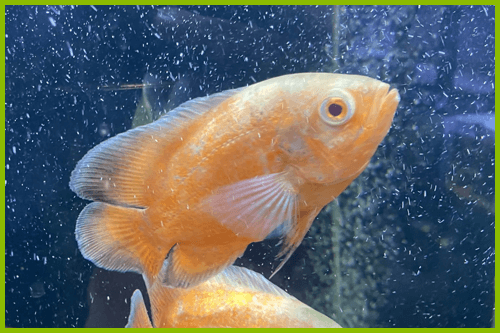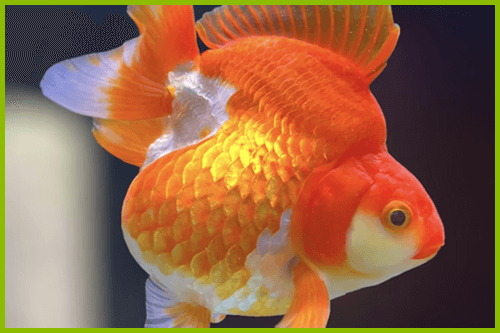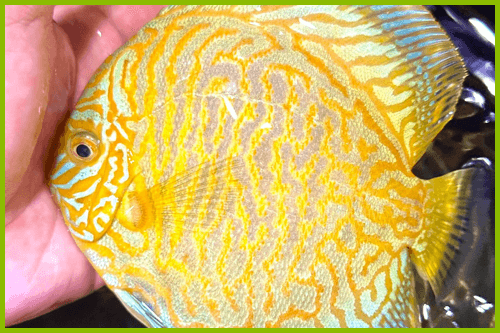Levamisole Hydrochloride
What is Levamisole Hydrochloride and how can you use it to deworm your Discus?
Does Levamisole Hydrochloride kill worms in fish?
Levamisole Hydrochloride (Levamisole HCL), is an anti-worm agent commonly used in large livestock such as cattle, pigs and sheep. It often comes in a dosage of 32g/L, and yes it does kill most worms in fish. Interestingly, Levamisole HCL is used in humans for diseases related to imbalances in the regulation of immune responses or deficiencies of the immune system. It also restores depressed immune responses in animals and humans.
News of its anthelmintic efficacy and immune system benefits has been known among aquatic hobbyists for years. Fortunately, Levamisole HCL does not harm the bio-filter, plants, invertebrates or uninfected fish. So as an added benefit to deworming, it boosts the immune competence of your fish.
Read our article to learn how to deworm your Discus.
Why should I use a de-wormer in my fish tank?
Internal parasites that can be treated effectively by Levamisole HCL are endemic. They are everywhere. Fish are also susceptible to these parasites. Since the parasites are what we are attempting to eliminate from our fish, we need a medication that is designed to affect those parasites.
Does the medication need to be labeled for ‘fish only’ use? Not if you know what the medication is composed of, whether it contains any chemicals or additives that would be harmful to fish, if it will work in water, how it works, and what the possible side effects may be. Many medicines that are used in ‘fish only’ preparations are also used in humans and animals.
Medications like:
- Neomycin
- Kanamycin
- Erythromycin
- Magnesium Sulfate
— to name only a few
AND…Levamisole Hydrochloride.
How does Levamisole HCL work?
How does Levamisole HCL work as an antiparasite agent?
Levamisole HCL is absorbed through the gut, can also be absorbed through the skin and is distributed throughout the body. Levamisole HCL affects the neurotransmitters and paralyzes the worm infection (spastic paralysis). The fish then passes the inactive worms.
Good gravel vacuuming is advised after treatment to remove the paralyzed (but still live) worms. It is not ovicidal, which means it will not affect eggs already present, but it will affect the larval stage of the worm. To ensure complete eradication of the parasite treat again after remaining eggs have hatched.
How does Levamisole HCL work as an immunomodulator?
The drug appears to restore depressed immune function rather than to stimulate response to above-normal levels. There is no complete answer to this question. For us, it is enough to know that it does stimulate immune function in fish that are suffering due to parasites or disease.
What if I overdose my fish?
The LD-50 (the lethal dose of a compound for 50% of animals exposed) of Levamisole HCL is 250 mg/l per 24 hours. This level of dosage is much higher than that which is prescribed for use in a freshwater bath (the method used in our fish tanks). Only extreme overdosing with this medication will result in death to your fish. Few accounts of adverse side effects in aquaria have been noted even with much higher than currently accepted appropriate dosing.
How long will it stay in my fish and how do I get it out of my tank?
Absorption is systemic within 3 – 4 hours. Within three days 70% of the medication will be gone from the fish via its excretory system. The vast majority of the compound will have been metabolised by your fish. The remainder can be removed by water changes and/or adding activated charcoal to your filtration system.
What PH does Levamisole HCL require?
Levamisole HCL is stable in water for up to 90 days, and will kill the worms in aquariums with both low and high pH values.
Which parasites will respond to treatment with Levamisole HCL?
Levamisole has been found highly effective in the treatment of mature and developing immature stages of major stomach and bowel worm species in cattle and sheep including gastro-intestinal worms such as:
Stomach worms—Haemonchus spp; Ostertagia spp; Trichostrongylus app;
Roundworms— Nematodirus spp (which include threadworms); Cooperia app;
Nodular worms—Oesophagostomum; Chabertia app;
Hookworms—Bunostomum spp; Necator spp; and Ancylostoma spp; and
Lungworms— Dictyocaulus spp. Nematodes (roundworms) in particular are a common problem.
Nematodes such as Capillaria, Eustronggylides, Camallanus, and Contracaecum are common among many fish species. Levamisole is highly effective as a treatment against nematode species.
It is INEFFECTIVE as a treatment for:
For excellent information on parasites of freshwater fish see the very informative articles posted at the University of Florida IFAS Extension: Introduction to Freshwater Fish Parasites
- Cestodes (tapeworms)
- For Cestodes the recommended treatment is Praziquantel.
- Trematodes (flatworms or flukes)
- For Monogenean Trematodes with a direct life cycle the suggested treatment is Formalin, administered as a short-term or prolonged bath.
- For Digenean Trematodes which have a complex life cycle, using differing hosts, the best control is to break the life cycle of the parasite. Elimination of the first intermediate host, the freshwater snail is often recommended.
How can I tell which parasite is affecting my fish?
The best way to determine if your fish is suffering from parasites, and which kind they are is to have the fish examined by a fish health specialist (veterinarian). Accurate diagnosis of an internal parasite infestation in aquatic animals is often outside of the ability of the average hobbyist. Stool samples, slides, microscopes and sometimes necroscopy or in the worst case scenario, autopsy, are the most effective way to determine exactly what parasite is inside your fish.
Many of us are just not equipped or knowledgeable enough to perform the necessary diagnostic procedures. What we can do is observe our fish, become aware of what symptoms may indicate parasitic infection, and learn what methods are best used to treat them.
Levamisole HCL is not a cure-all but it is a good first line of defense against many parasites common to wild caught fish.
Nematode infections in fish will present with one or more of the following externally observable symptoms:
- To learn more about Nematodes read the article by Dr. Roy Yanong, Nematode (Roundworm) Infections in Fish.
- Hemorrhaging (bloody streaks in fins or body)
- White/translucent stringy feces
- Inflammation
- External lumps or nodules
- Necrosis (dead or dying tissue)
- Cysts
- Granulomas – which are a reaction by immune cells trying to wall off some foreign body (like a worm). They can look like little brown rocks in the shape of the worm but will have a distinct clear edge.
- Wasting
- Bloated abdomen with fish exhibiting otherwise normal behavior
- Worms protruding from the anus (specifically Camallanus)
Watch our video to learn how to identify sick Discus.
A little bit about parasites in general and nematodes in particular
Healthy fish can carry a low load of parasites without ever showing outwardly visible signs. Fish that are stressed or sick are immune-compromised and will find it difficult to keep down parasitic infections. Fish carrying a heavy parasite load also become more susceptible to secondary bacterial infections. Because parasites are everywhere, wild caught fish can be assumed to be harboring parasites whether they appear healthy or not.
Quarantine tank treatment with Levamisole HCL prior to placing new wild caught fish into an established community tank, is advised. This will both eliminate parasites (those affected by Levamisole HCL) and boost the immune system of your fish, helping them keep at bay any secondary infections as a result of parasitic damage.
The severity of damage caused by parasitic infection depends on a number of factors. Number of worms present in the fish, age and species of the fish and the sites of infection all affect the level of damage caused by the parasite.
Most adult nematodes are found in the digestive tract. However, adult and other life stages of worms can be found in muscle tissue, organs, and tissues surrounding the organs. Levamisole HCLworks primarily in the digestive tract so parasites located in organs or tissues may be unaffected by treatment.
Nematodes have two major categories of life stages, direct and indirect. As indirect hosts, fish can be either the final host, excreting eggs that begin the life cycle all over again, or the intermediate host as shown below:
Because Levamisole HCL is not harmful to the bio-filter, fish, plants, or invertebrates you can safely treat the within the community tank. In fact, it is best to do so to eliminate possible parasites in any intermediate hosts that may be in the tank. Fish that are suffering from secondary bacterial infections due to parasitic worm damage should be removed to a quarantine tank for appropriate antibiotic treatment.
Recommended dosage
Dr. Roy Yanong, V.M.D. recommends the following for treating fish with internal parasites susceptible to Levamisole HCL:
The dosage rate for levamisole in a bath is 2 mg/L (2 ppm) for 24 hours (followed by 70-100% water change, and siphon the bottoms of the tanks), with repeat treatments necessary–retreat in 2-3 weeks, and probably one more time after that. This is regardless of size of fish.
The 2 mg/L dosage rate (of the active ingredient Levamisole) is currently (2007) the level being used by the scientific community. It effectively paralyzes levamisole susceptible parasites at that concentration. Increasing the dosage level does not seem to have any greater effect. Paralysis of the worms takes place when that level of Levamisole HCL is present in the host–your fish.
Dr. Yanong recommends that whenever possible, try to diagnose what parasite your fish are harboring prior to treatment. Work with an ‘exotic pet’ veterinarian, or a fish health specialist to insure you are treating with the right medication.
Summary & procedure
Levamisole HCL is a safe and effective anthelmintic for use in aquariums. It does not harm the biofilter, plants or invertebrates (including shrimp) in your tank and has the added benefit of stimulating the immune system of the tank inhabitants (watch our video about fish tank filters to learn more). I highly recommend its inclusion in any fishkeeper’s arsenal of medications. For those of us who purchase wild-caught fish, it is something that should be part of our quarantine tank treatments for newly purchased fish.
Hobbyists have been using it for years now and there are few reports of negative effects on fish. At higher dosages than recommended there have been some reports of cloudy water at initial treatment, and a very few reports of rapid respiration or stress related behavior in fish. One reported result of treatment stated yellow water, clamped fins and heavy breathing in cichlids, as well as explosive plant growth. After a couple of days, the negative effects on the cichlids seemed to disappear so he continued the treatment regime.
Dosing levels prior to this information were all over the charts. Without exception the dosages used were higher. Some were much higher.
Recommendations ranged from 1-2 mg/l up to as much as 21 mg/l. Based on the research for this article it’s my hope that hobbyists will face less confusion regarding the use of Levamisole HCL in aquaria.
Below is the treatment protocol I have used for treating parasites with Levamisole HCL.
- Determine the appropriate dosage for your tank (10ml per 70L).
- Treat with the lights off and increased aeration.
- Perform a largish water change prior to treatment.
- Treat once and leave for 72 hours (no waterchange).
- Do a largish water change and vacuum to remove any paralyzed worms in the substrate (on Day 4).
- Return tank to normal lighting/feeding/cleaning cycle.
- Treat again on day 7 days after a water change (this is to eradicate the newly hatched worms as during first treatment).
- Do another water change with gravel vacuum 3 days later.
- Do another good vacuuming with water change and consider your treatment complete.
- Return to normal schedule and worm your fish again every 4-6 weeks cycle.
Read about the Levamisole HCL treatment now.
Usually, I see a marked improvement in vitality and appetite after the first treatment. Don’t let this convince you that the fish is cured! Complete a full course of treatment. In commercial fish enterprises and in livestock there have been reports of various parasites developing resistance to Levamisole treatment.
Info from https://www.loaches.com/disease-treatment/levamisole-hydrochloride-1/?searchterm=parasites
Disclaimer: This is a guide only. OZ Discus is not liable for any losses and holds no responsibility in the event of the death of the fish. Users of this guide are to use the information at their own discretion and accept all risks resulting from the use of this guide.
Shop OZ Discus
Visit our Live Fish Explorer and discover our premium Discus fish for sale.
We import our fish from the best farms and breeders around the world to ensure that you have the highest quality Discus for your fishkeeping journey.










